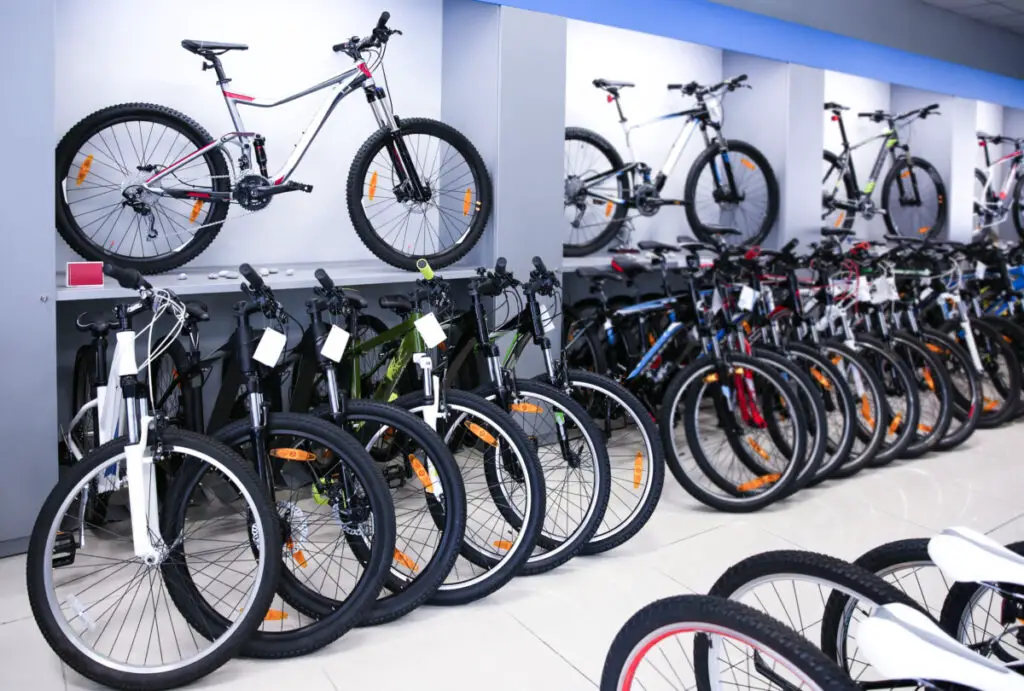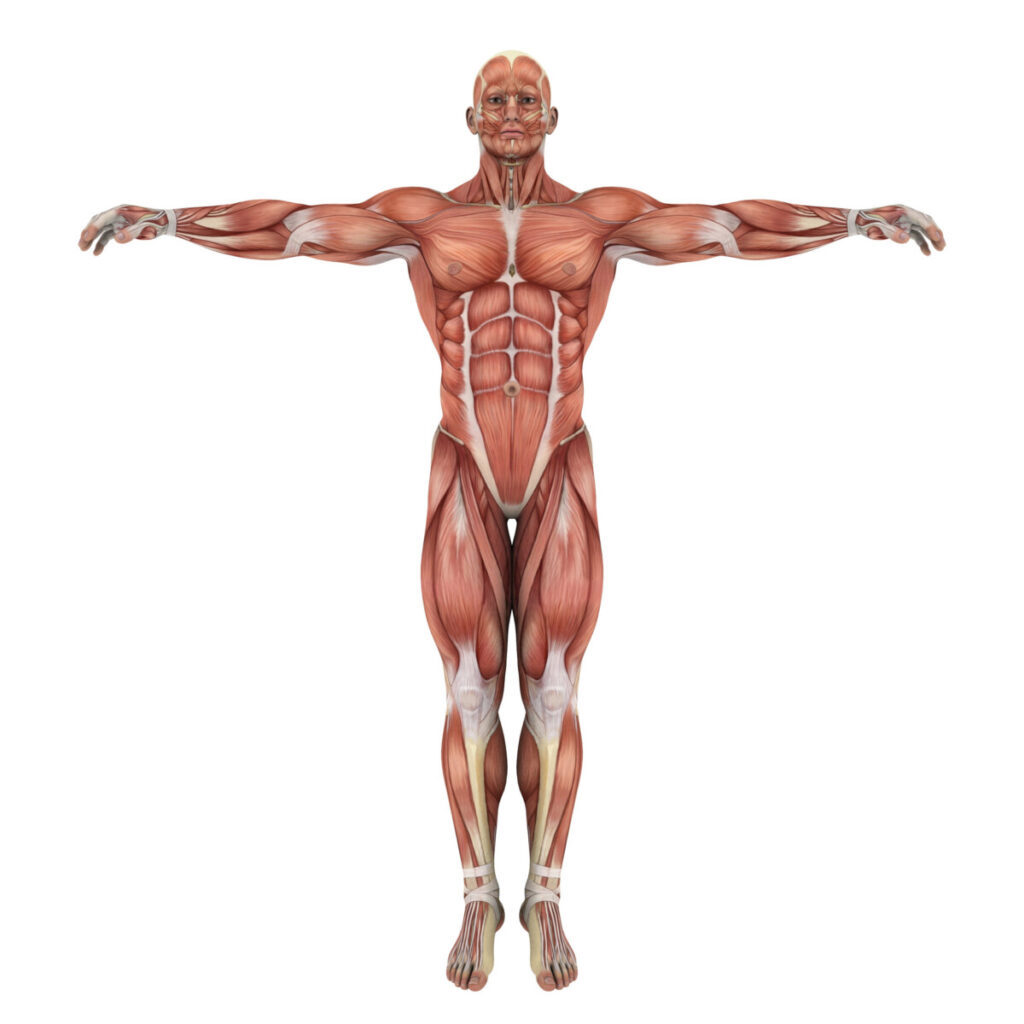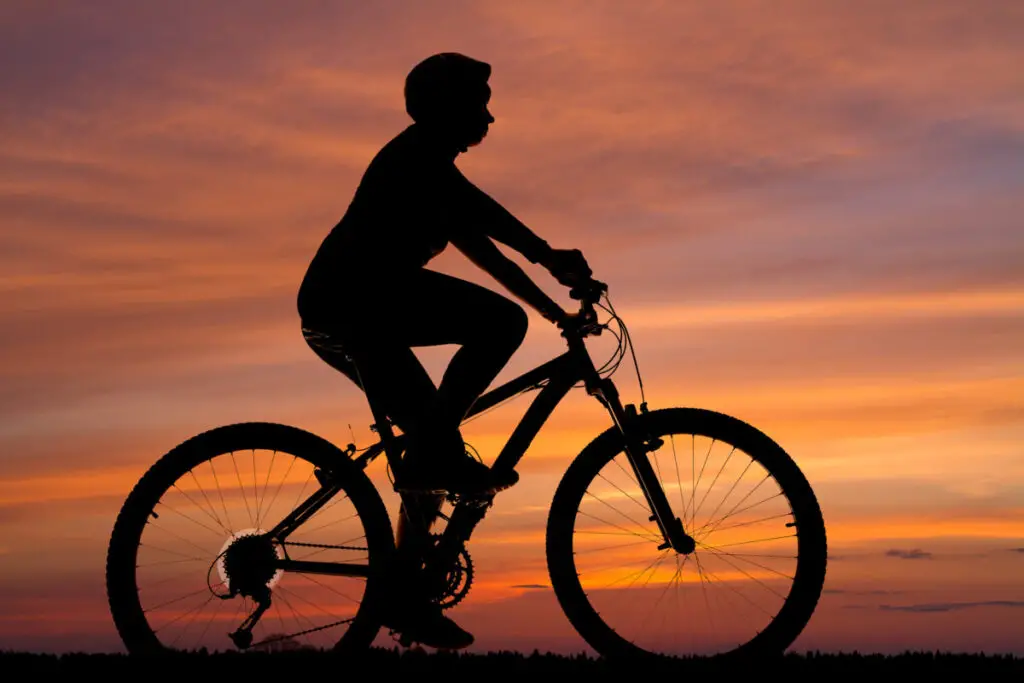Athleticism is often associated with smaller bodies in sports like cycling where drag is important, but larger people are just as capable of success on a bike. Making a few adjustments will help heavy riders improve their cycling abilities and enjoy cycling even more.
Heavy riders need to rely on their advantages of leverage, strength, and weight. Through careful bike selection, disciplined form, improved muscle efficiency, and additional training, heavier riders will have increased comfort and be able to perform at higher levels and ride at faster speeds.
A large rider will want to make some adjustments to both their bike and their technique. Understanding the reasoning behind techniques and more specific guidelines will help you see more success.
Choosing the Right Bike
Tiny framed thin wheel bikes may be great for reducing drag, but they are not going to work for a heavy rider. Checking the maximum weight recommendation from the bike manufacturer is important, but there are a lot of other specifications that can help you make an informed choice when choosing a bike. Frame material and size, wheel width and diameter, spokes, brakes, and seats should all be considered when selecting the perfect bike for you.
Most high-end bike shops will offer professional bike fittings, which might be a great option to look into for many riders. Whether you are going to a professional or selecting the bike yourself, you will want to be armed with as much knowledge as possible.
Researching the weight limits of bikes before you go into a shop is incredibly helpful since most bike shop employees will be inexperienced with heavy riders. In general, it will be difficult to find a suitable bike online or in a generic store since the specifications are so important and unique. You will have better luck at a specialty bike shop or sporting goods store.

Bike Frame
Starting with the frame, it needs to be sturdy and durable but with the lowest weight possible, since the rider is already heavy. The frame material also needs to have extra flex before getting to the breaking point. The typical frame materials you can find are steel, aluminum, carbon fiber, and titanium. Steel or titanium are the best options for heavy riders because of their flex and strength that allows for a higher weight limit.
There are two types of steel used for bike frames: Carbon and Chromoly. Both kinds are incredibly sturdy and will last longer than most other materials. Carbon is the more common type of steel, while Chromoly is more high-tech. Chromoly has better flex and can also be busted and shaped to decrease weight in ways that Carbon cannot.
Titanium is the more expensive option, but it is also a lighter material. Titanium absorbs weight and shock incredibly well without needing shocks. If you can afford it, a high-end titanium bike frame will have the best strength to weight ratio.
Aluminum and carbon fiber are both very common, affordable, and light. However, they lack the sturdiness of the more expensive metals and will not have the durability necessary for a heavy rider.
Wheels and Tires
When considering wheels, spoke count is crucial for structural integrity. The larger the wheel, the more spokes you will need to keep up stability. In general, you should try to get a wheel with at least 36 spokes to support higher weights. The bike frame you get will also provide a lot of guidance towards what wheels you need.
For heavy riders, the wider the tire the better. Wider tires provide a more comfortable ride, and they also have a lower chance of getting a flat. For maximum performance, tires need to be fully inflated. The more weight you are putting on a tire, the higher the inflation should be.
All tires will have recommended inflation pressures within a range. If you are a heavy rider, inflate your tires to the higher side of the range to help avoid flats and keep your bike rolling at its best possible performance. Wider tires will be able to handle the high pressures you need much better than a thinner alternative.
Additionally, you should inflate your back tire slightly higher than the front, since it carries the bulk of your weight. However, if you ever have to replace a tire, put your newest and best tire on the front. The back tire goes through more wear and tear, but if a tire goes flat it will be much safer to stop with a front tire intact so it can guide your steering.
Other Considerations
The bike seat is going to make a huge difference in comfort during a ride. Smaller seats are going to be more uncomfortable for practically anyone. For heavy riders, the comfort of the seat may be even more important since it is carrying more weight. Luckily, the bike seat is one of the easiest and cheapest replacements you can make on a bike.
If you do not like your current seat, try getting an extra-wide seat or a saddle seat. There are also lots of cushion options, whether the extra comfort is built into the seat or if you purchase a cover for the seat with extra layers of foam or gel. For long-term comfort, you should also make sure that your seat is adjusted well to encourage good posture while riding.
High-quality brakes are extremely important, especially for heavy riders. The extra weight puts a lot more stress on the brakes than a lighter rider typically would. Check your brakes regularly to look for any unusual wear and tear. Checking them often will also help you recognize when they need to be replaced and proactively avoid any disasters.
Improving Muscle Efficiency

If you are frustrated feeling like you can’t keep up with smaller frame riders, take a look at your riding efficiency. Large riders indeed have to carry more weight and produce more drag, but they also have more potential for power. Larger frames are more powerful if you are using your body to your advantage. Paying attention to the muscle groups you are using, as well as the way you treat your muscles, will give you a good look at where you can improve for maximum efficiency and speed.
Increased aerodynamic drag is a huge obstacle for larger riders. It takes a lot more power and energy to ride with increased resistance. This is why it is so important for heavy riders to understand muscle efficiency. Using your body fully to your advantage will help negate the effects of drag.
Remember Your Core
Everyone knows that biking demands a lot of power from your legs. Most people will just feel soreness in their legs after a difficult ride, making it easy to forget the crucial role of your core when biking. Your legs hinge at your core muscles, making them incredibly important.
Abdominal muscles are the behind-the-scenes powerhouse for leg movement. If you’ve ever done leg lifts, you know how hard your core has to work to move the weight of your legs. Biking is at a different angle, but the same muscles are still at work. A stronger core is able to power the movement in your legs much more efficiently.
The core is also important for maintaining posture and stability on the bike. New riders can find it difficult to find and maintain good posture on a bike seat, but seasoned riders know how important posture is. Having good posture will increase long-term comfort and allow for more efficient body movement. Correct posture will also help riders stay in control over the bike. The core muscles are what enable good posture, as they support the spine and stabilize the center of your body.
Focusing on strengthening your core through activities outside of cycling will result in improved performance on the bike. Multiple muscles make up your core, including the erector spinae, rectus abdominis, transverse abdominis, obliques, and multifidus.
Different muscle groups are more important for stability versus mobility, but you need both for riding a bike, so well-rounded core exercises will be the best way to improve your cycling performance. Bicycle crunches, traditional and side planks, and mountain climbers are basic moves that will work on strength, balance, and coordination. There are tons of great core strengthening options, so experiment until you find a routine that works for your body and preferences.
Use the Right Parts of the Leg
Of course, you are using your legs if you are on a bike, but using all of the muscle groups and make a huge difference in power. On each leg, you have calves, hamstrings, quads, and glutes. If you are heavily using your calves and hamstrings, you are wasting energy and lowering efficiency.
Powering the bike comes from pushing down on the pedals, not on the return. If you notice a lot of ankle movement as you follow the pedal back up, that is a sign that you are trying to use muscles that you don’t need to. Using bike shoes that clip onto the pedals may help eliminate the urge to use your calves and hamstrings to bring the pedal back up.
It is instinctual to mainly use your quads to power the pedals. This works great, but using your glutes in addition to your quads will dramatically increase power. Drawing from another muscle group puts less strain on the quads, allowing them to work harder for longer, and also adds in the power from the muscle development you have in your glutes.
However, having strong glutes will not help you unless you are engaging and using them during the down pedal. Engaging the glutes doesn’t come naturally to everyone and may take some careful concentration and practice. When you are using your glutes, you will feel the tensity in your butt where it meets the top of your leg.
Coordinate Muscle Fibers
Each muscle is made up of a collection of fibers that work together to perform actions. Just like any team, the fibers work more efficiently when they are coordinated. Aligning the fiber movements will allow the larger muscle to function with more speed, coordination, and power.
Muscle fibers naturally work together, but they are not instinctually coordinated. Sprint training will help teach the fibers to flex and fire together. Regularly biking at max capacity will force the muscles into a habit of maximum efficiency. For muscle fiber coordination, you need to be training on your bike because no other exercise will be able to hit the same muscle groups in exactly the same way.
Increase Oxygen Delivery
Muscles need oxygen to function. Increasing the amount of oxygen that a muscle is receiving will increase its max power potential. The amount of oxygen that is delivered to your muscles is determined by your VO2 max. This is a measurement of the maximum amount of oxygen your body is able to use during exercise, different from the amount of oxygen you are breathing in.
When you are exercising, only some of the oxygen you breathe in is able to be used by your muscles as they work. The better your cardiovascular health, the higher your VO2 max will be, and the more efficiently your muscles can provide power.
Increasing your VO2 max takes a lot of difficult work, but is possible. To increase your body’s capacity, you need to max out what you are already capable of. This includes high-intensity exercise as well as endurance exercise. You will want to combine interval training where you alternate periods of high intensity with periods of rest and continuous training where you sustain a slightly lower intensity but for much longer.
For continuous training, it may be helpful to find your FTP or functional threshold power. Using a bike with a power meter will help you calculate your FTP. Take the reading on the power meter after biking as hard as you can for 20 minutes. Subtract 5% from that power score, and that will tell you the value of your FTP. In application, the FTP is the difficulty level of exercise that you are able to sustain for a full hour. Training at your FTP will demand the maximum from your body, and therefore increase your VO2 max.
My Recommended Gear for Year-Round Cycling on a Budget
It took me years of trial and error to figure out the best and most affordable setup for my daily bike commuting. I would only recommend the gear that is good quality for a good price. Here’s my full year-round gear recommendation guide.
Want to know how much your cycling gear should cost? Check out my guide with different budget options here.
Ride on!

